John Hurrell – 8 February, 2024
In the colourful paintings, Sutherland also delights in ambiguous motifs that are slippery in interpretation, where apparent meaning lurches or spins off to one side. In an earlier show, a curved triangular wave could be a menacing shark fin; in this one, a rectangular domino might also be a couple of dice; or reversed lowercase e's hovering number nines or picture hanging hooks. Depicted horizontal ‘shelves' are often precarious (on rollers)—or become sloping—and a title like ‘back issue' can mean a magazine, political debate, or the rear surface of a woman's torso.
Ella Sutherland is a Sydney-based New Zealand artist, well known for her formidable book design skills, and paintings that revel in bold flat colour, female body forms, typographic intricacies, structural metaphors and a repertoire of coded motifs that comment on queer theory, women authors and pioneer designers she admires.
This is her fourth exhibition in Dan du Bern’s Sumer gallery, and it is a reconfiguration of projects made during her time as the 2023 Creative New Zealand Berlin Artist in Residence. In a visual sense her works are related to the paintings of Matt Mulligan (with discrete semiotic elements) or Brent Harris (with merged, also-queer and also-coding elements). ‘Argot’ of the show’s title, refers to a secret language embraced by minority communities to protect themselves.
The depiction of layered sheets in some of the paintings on the wall (with ‘pinioned’ plinths tucked behind them) reflects the superimposing of canvases seen also on low flat plinths on the floor, that like those on the wall, depict blended grey blurry female bodies. As well as showing blank A4 sized paper pages, the stacked rectangular planes in both cases seem to symbolically represent women’s bodies during intimate acts. The Sumer space thus becomes a holistic political installation—distantly alluding to a boudoir.
Note too that this artist likes to play with the conventions of gallery presentation. She is intrigued by the pragmatics of architectural space. As explained, it is paintings we see on floor plinths instead of sculptures, and strange plinths positioned with paintings on planar walls. One of the paintings hung by itself is tilted at a conspicuously peculiar angle. Walls and floors are treated like pages in a giant book.
In the colourful paintings, Sutherland also delights in ambiguous motifs that are slippery in interpretation, where apparent meaning lurches or spins off to one side. In an earlier show, a curved triangular wave could be a menacing shark fin or loving lips; in this one, a rectangular domino might also be a couple of dice; or reversed lowercase e’s hovering number nines or picture hanging hooks. Depicted horizontal ‘shelves’ are often precarious (on rollers [but also are printing presses])—or become sloping—and a title like ‘back issue’ can mean a magazine, past political debate, or the rear surface of a woman’s torso.
Sutherland‘s twelve works at Sumer range in focus from large rebus-like painted puzzles posing as manifestos—some of which incorporate painted dominoes—to printed-on philatelic displays referencing the fiscal collapse of the Weimar Republic juxtaposed with digitally treated mediaeval woodcuts, and delicate undulating texts seemingly referencing the life of Modernist designer and architect, Eileen Gray and reflexive poetry about the art itself. There is also a takeaway catalogue featuring 28 images of unclothed ladies from the world’s first lesbian erotic magazine, which closed when the Nazis gained power in late 1932.
One fascinating element that surfaces a few times is the notion of a printer’s devil (called Titivillus) who maliciously causes havoc in the printing workshop, scrambling up the typeset, losing lines of text, or diluting the inks. He is linked to the letter M, a conspicuous motif in some images.
Sutherland is expert at making compellingly mysterious hard-edged images or crisp presentations of arcane poetic language (with carefully manipulated fonts and spacing) that draw you back time and time again. Whilst both serious and playful (but not mischievous), much of it is also deliberately oblique in intention. Her use of formal sensuality approaches the overtly clinical, and though at times baffling, is also overwhelmingly optically beguiling.
John Hurrell
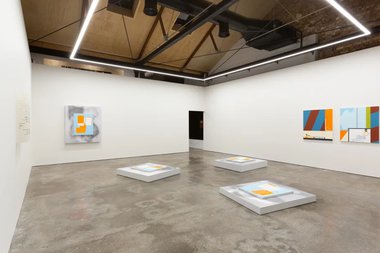

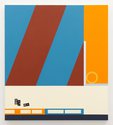
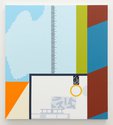
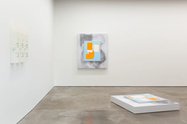
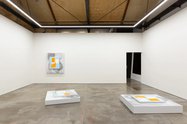
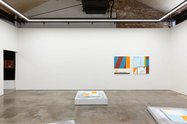
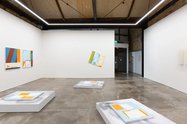
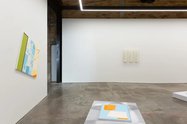
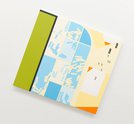
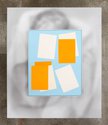
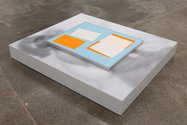
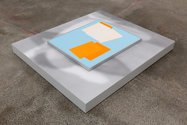
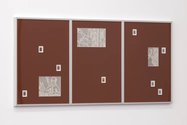
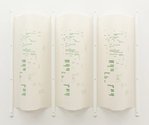



 Advertising in this column
Advertising in this column Two Rooms presents a program of residencies and projects
Two Rooms presents a program of residencies and projects



This Discussion has 0 comments.
Comment
Participate
Register to Participate.
Sign in
Sign in to an existing account.